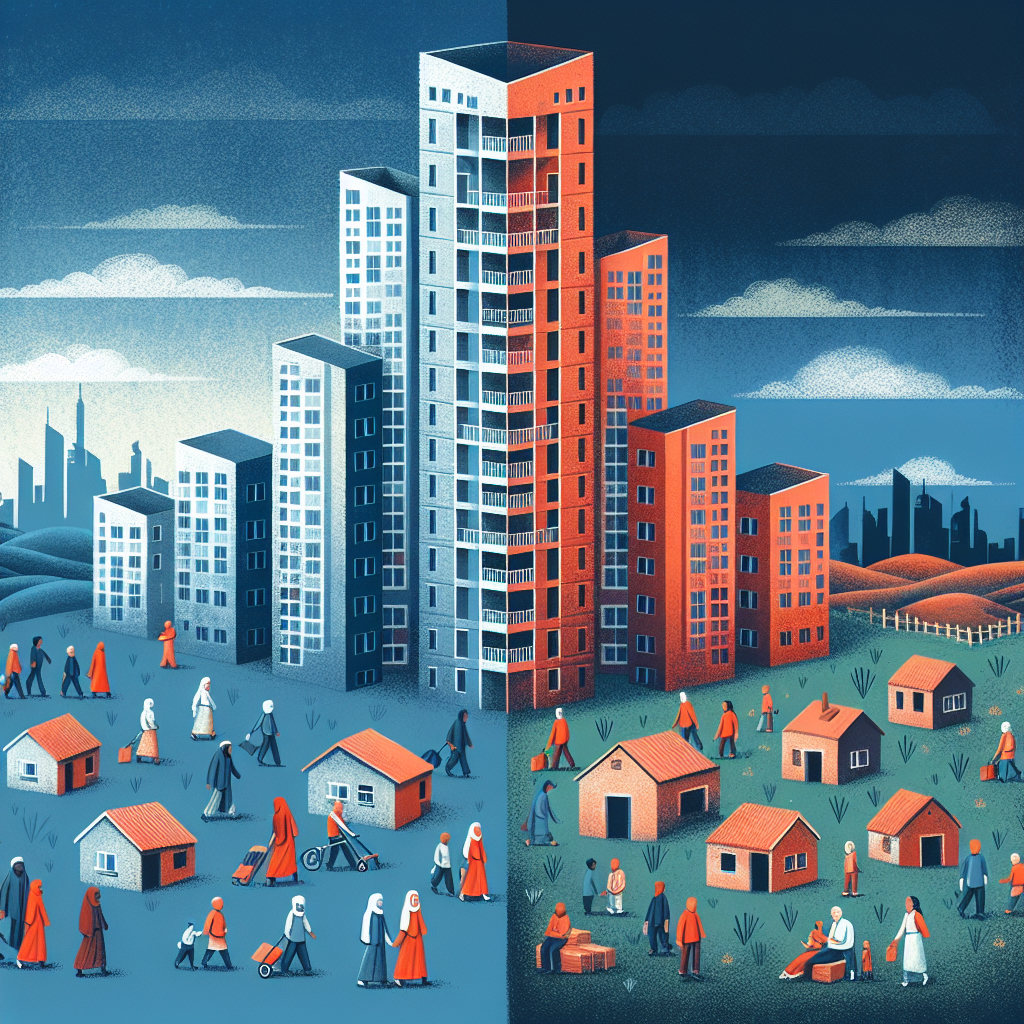The Impact of Migration on the Housing Market: A Tale of Two Sectors
The Impact of Migration on the Housing Market: A Tale of Two Sectors
Migration has long been a driving force in shaping economies and societies. As people move across borders in search of better opportunities, the ripple effects are felt in various sectors, with the housing market being one of the most significantly impacted. This article delves into how migration influences the housing market, examining both the positive and negative effects on urban and rural areas.
The Urban Housing Boom
Urban areas are often the first to feel the impact of migration. Cities attract migrants due to the availability of jobs, educational opportunities, and better living standards. This influx of people can lead to a housing boom, characterized by increased demand and rising property prices.
Increased Demand and Rising Prices
As migrants flock to cities, the demand for housing increases. This demand often outpaces supply, leading to a surge in property prices. For instance, cities like London, New York, and Sydney have experienced significant price hikes partly due to international migration. According to a 2020 report by the Global Property Guide, property prices in these cities have risen by an average of 5-10% annually over the past decade.
- Increased demand for rental properties
- Higher property prices
- Development of new housing projects
Challenges of Urban Migration
While the urban housing market benefits from increased demand, it also faces challenges. The rapid influx of migrants can strain existing infrastructure, leading to overcrowding and inadequate housing conditions. In cities like Mumbai and Lagos, slums have expanded as a result of insufficient affordable housing options.
- Overcrowding in urban areas
- Inadequate infrastructure
- Expansion of informal settlements
The Rural Housing Dilemma
In contrast to urban areas, rural regions often experience a different set of challenges and opportunities due to migration. While some rural areas benefit from an influx of migrants, others suffer from depopulation as residents move to cities.
Revitalization Through Migration
In some cases, migration can breathe new life into rural communities. For example, towns in Italy and Spain have offered incentives to attract migrants, leading to the revitalization of local economies and housing markets. These initiatives have resulted in increased demand for housing, renovation of old properties, and the development of new infrastructure.
- Increased demand for rural properties
- Renovation of old properties
- Development of new infrastructure
Depopulation and Housing Decline
Conversely, many rural areas face depopulation as residents migrate to urban centers. This trend leads to a decline in the housing market, with properties remaining unsold and falling into disrepair. In countries like Japan, rural depopulation has resulted in millions of vacant homes, known as “akiya,” which pose significant challenges for local governments.
- Decline in property values
- Increase in vacant homes
- Challenges for local governments
Conclusion: Balancing the Scales
The impact of migration on the housing market is a complex tale of two sectors. Urban areas experience a housing boom, driven by increased demand and rising prices, but also face challenges such as overcrowding and inadequate infrastructure. Meanwhile, rural areas can benefit from revitalization through migration, yet many suffer from depopulation and housing decline.
To balance these scales, policymakers must implement strategies that address the unique challenges and opportunities presented by migration. This includes investing in affordable housing, improving infrastructure, and creating incentives for migrants to settle in rural areas. By doing so, the housing market can better accommodate the dynamic nature of migration, ultimately benefiting both urban and rural communities.



